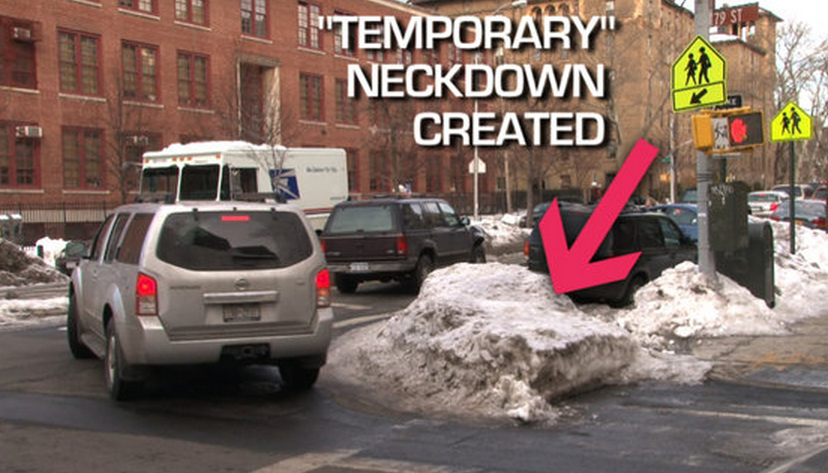Public and political pressure continued to mount, expecially as examples continued to come in from other cities. Photo after photo of from other cities closing streets with simple barriers without a heavy police presence made it untenable to continue insisting that New York City was so unique that we could not open our streets too. Finally, another small number of short street segments were announced for an initial opening this past weekend.
The first day at the Oval only had a small hiccup. The barriers were placed at Reservoir Oval itself, stopping traffic after it had turned onto the inlet streets, with no good way to turn back around. When the street openings were announced with their mileages, I wondered why DOT had not taken credit for the additional mileage from those side streets. The day before the street opened, my 8-year-old son was even thinking out loud on his own about where the barriers would need to be placed for these streets. Just a couple hours after the Safe Street opening, the NYPD recognized and corrected the situation by bringing out additional barriers to intercept the drivers before turning onto those streets. Still, it was an inexplicable mistake for professionals to make.The charitable way to greet this is that ... it's only a start. They risk making destinations of these streets with slow ramp-ups, though. You can have my street! pic.twitter.com/HQ03v3p4sJ— Nicole Alone of Silent West Midtown 🌸🐿💐🌺🌹☔️🐥 (@nicolegelinas) May 1, 2020
The Oval seems to be working well as an open street today. pic.twitter.com/PjPjd1vc54— Urban Residue (@urbanresidue) May 2, 2020






